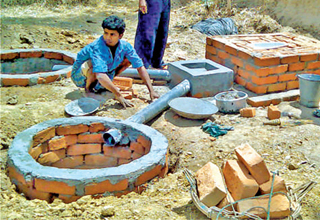Scores of Gujarat local bodies to implement urban sanitation plans
Updated: Jun 30, 2014 02:08:31pm

Gujarat Urban Development Company Limited (GUDC) is planning to appoint consultants for preparation of a city sanitation plan for the cities of Jamnagar, Rajkot, Junagadh and Bhavnagar and 159 urban local bodies, an official notification said.
The consultants would have to prepare city/town wide plan; sanitation mapping, demand supply gap analysis, identification of opportunities in stress areas, strategy for implementation and implementation options / solutions, it said.
Industrial health applies to the equipment, facilities and premises utilized in the production process. It is extremely important to adopt measures to ensure that the facilities meet the industrial health standards which guarantee an efficient implementation of the process.
These standards apply to small, medium and large enterprises and cottage industries alike.
Sanitation controls the source of contaminants in the environment, preventing contamination of food products. In this sense, sanitation removes soil and microorganisms (bacteria, yeast or molds, etc.) from the environment and prevents bacterial build up, ex: biofilm, reducing the possibility of cross contamination.
Even though sanitation has always been related to food safety, good sanitation has also a positive impact on other aspects of the product such as appearance, flavour, longer shelf life and overall acceptability of the product.
According to reports, the population of India is 1237 million with approximately 28 per cent or 285 million living in urban centres and it is expected that the share of urban population will increase to about 40 per cent of total population by the year 2021. This is in sharp contrast to only 60 million who lived in urban areas in 1947 when the country became independent. During the last fifty years the population of the country has grown two and half times, while the urban India has grown by nearly five times.
The positive role of urbanization has often been over-shadowed by the deterioration in the physical environment and quality of life in the urban areas caused by widening gap between demand and supply of essential services and infrastructure. It is further associated with many problems, such as high levels of poverty, environmental stress, risks to productivity, high health costs, and lack of access to basic services, such as water supply, sanitation, and housing.
The insufficient availability of services, inadequate awareness and also poor operation and maintenance has also given rise to poor sanitation conditions. (KNN/ES)












